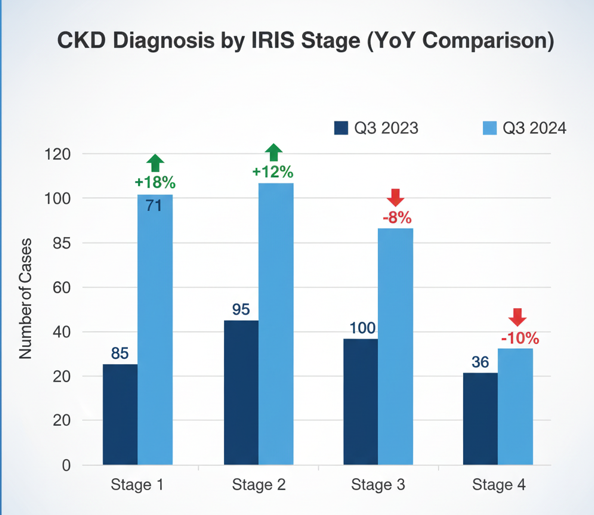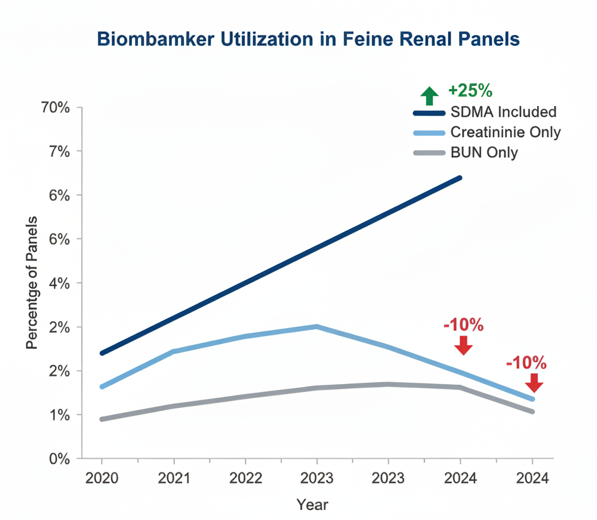Certainty, Uncovered:
The Q3 2024 Feline Kidney Disease Report
An analysis of over 500,000 patient data points reveals a definitive shift in feline diagnostics. See the trends that are shaping the future of nephrology.
Executive Summary: The Era of Early Detection Is Here
The Tashikin Q3 2024 data analysis reveals a clear and encouraging trend: the veterinary community is successfully identifying Feline Chronic Kidney Disease (CKD) at a significantly earlier stage than ever before. This shift, driven by the adoption of advanced biomarkers, is moving the clinical focus from crisis management to proactive, long-term care, fundamentally changing the prognosis for millions of cats. This report unpacks the data behind this trend and provides forward-looking insights for clinical practice.
Key Finding 1: A Decisive Shift to Early-Stage Diagnosis

The data unequivocally shows that more cats are being diagnosed in IRIS Stage 1 and 2. This represents a major clinical victory, as interventions at these stages are most effective in slowing disease progression and preserving quality of life. The challenge for practices is no longer just finding the disease, but managing it for a longer duration.
Key Finding 2: Advanced Biomarker Adoption is the Primary Driver
There is a strong positive correlation between the increase in early-stage diagnoses and the 25% year-over-year growth in the use of SDMA. This data provides quantitative evidence that the adoption of more sensitive biomarkers is directly empowering veterinarians to find kidney disease months or even years earlier than was previously possible.

The Path Forward: A New Clinical Landscape
The most powerful implication of this data is the 'prognostic dividend'—by diagnosing CKD an average of 1.7 years earlier, the window for effective clinical management has been significantly extended. The guiding path for practices is clear: shift focus towards building robust chronic care and client communication programs. The future of feline nephrology is not just about diagnosis, but about long-term, proactive health management.

